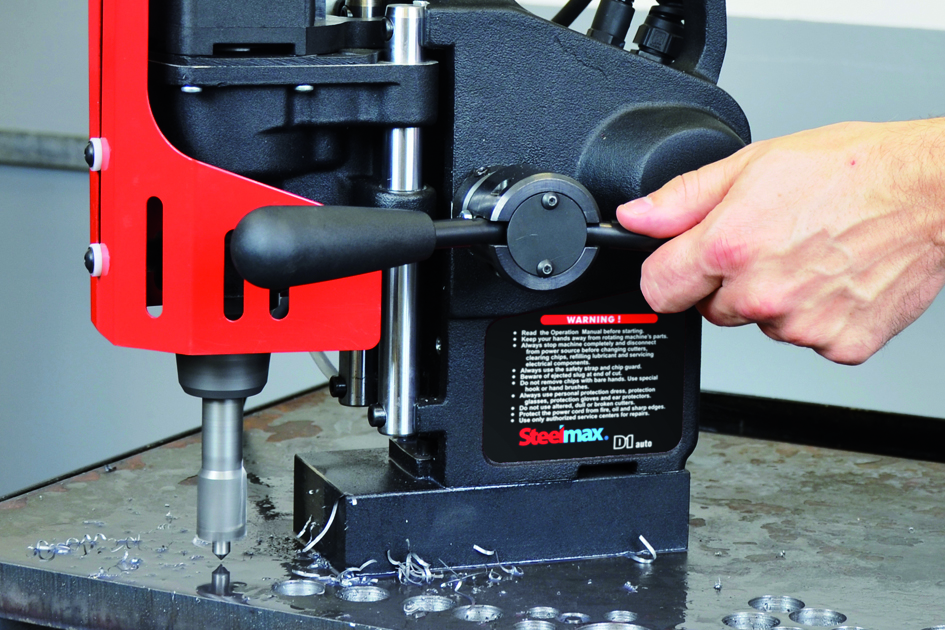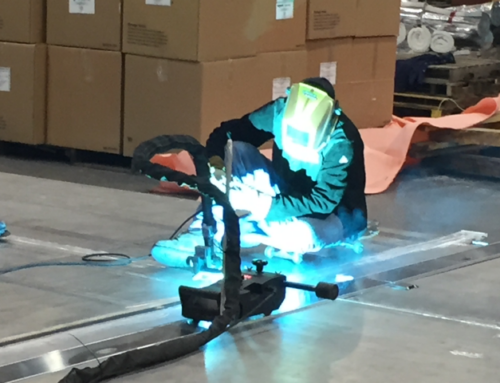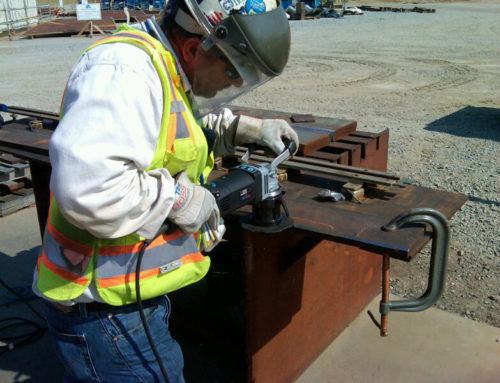Josh Chiprich, vice-presidente da Steelmax Tools, discute o que você deve considerar e as perguntas que você deve fazer ao comprar uma Furadeira Mag.
A busca começou. Você conversou com colegas de trabalho, entrou na internet e até visitou uma ou duas lojas porque finalmente chegou a hora de comprar uma furadeira magnética, comumente conhecida como furadeira magnética. As brocas magnéticas são uma ferramenta essencial para qualquer pessoa envolvida na produção, instalação ou alteração de aço e metais.
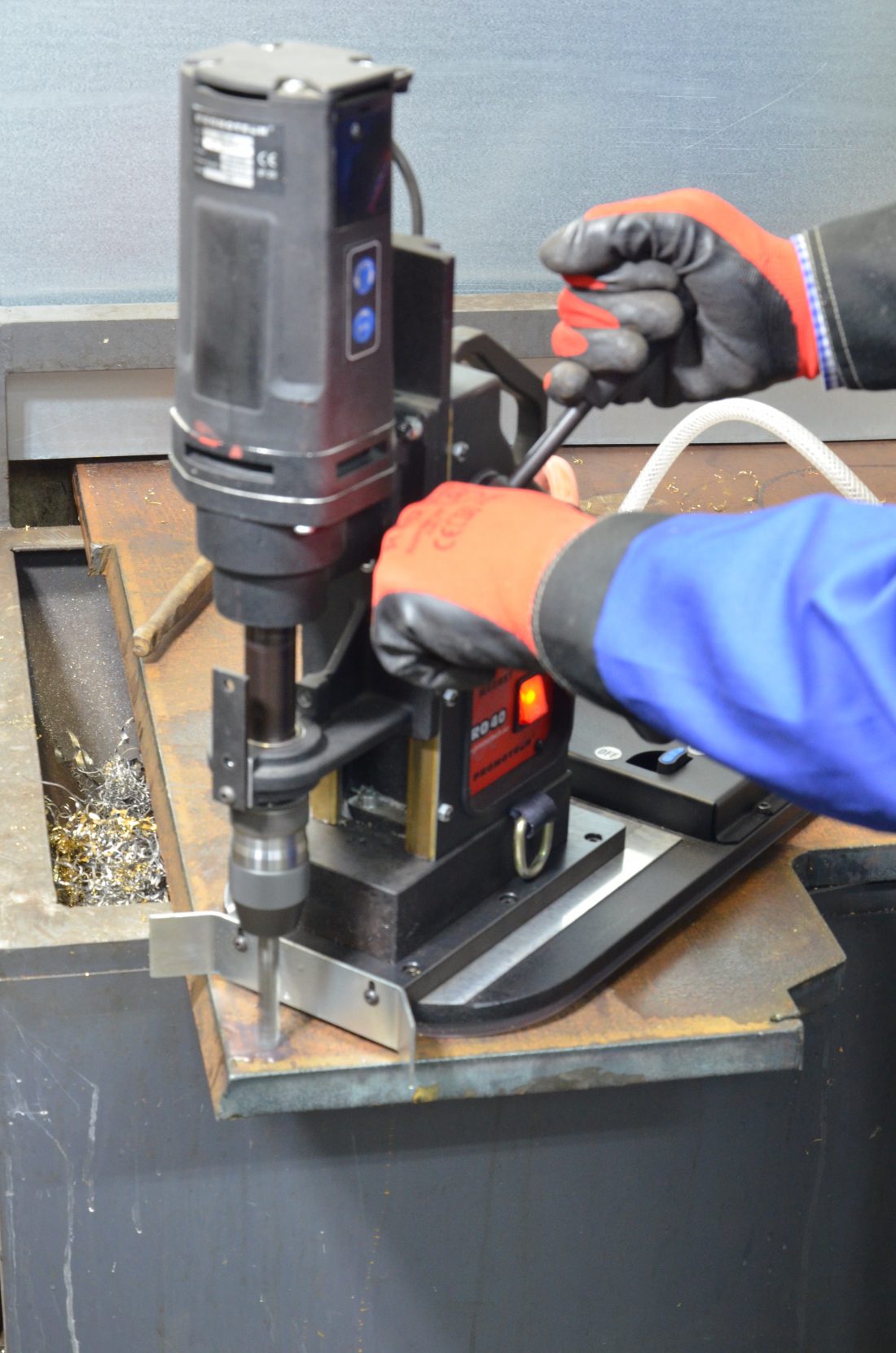
Você logo descobre que existe um grande número de furadeiras magnéticas disponíveis - todas com seu próprio conjunto de capacidades, tamanhos, recursos e acessórios. Existem brocas para fazer furos simples em placas planas, brocas de baixo perfil para uso em espaços restritos (como estruturas de caminhões) e ATEX© istoautenticado brocas projetado para uso em ambientes perigosos (como instalações de mineração e processamento químico). Juntamente com a miríade de acessórios disponíveis para essas brocas, escolher a broca magnética certa pode ser uma tarefa difícil. No entanto, a verdade indiscutível é que quando você precisa fazer furos e a obra não pode ser movida para a máquina, brocas mag são a maneira mais simples e econômica de levar a máquina para o trabalho.
Para ajudar a simplificar o processo de escolha de uma furadeira magnética, aqui estão algumas das questões que você deve considerar para restringir a lista de opções potenciais.
Qual é o diâmetro máximo do furo que precisa ser feito e qual é a espessura máxima da placa que precisa ser perfurada? Essas duas dimensões determinam o tamanho e a potência mínimos da broca para sua aplicação. As brocas Mag são projetadas para serem usadas com Cortadores Anulares em vez de brocas helicoidais sólidas, mas muitas são capazes de usar ambas. Se você usará cortadores anulares ou brocas sólidas também será um fator no tamanho mínimo e na furadeira de potência magnética necessária para sua aplicação.
Quantos furos você está fazendo? As brocas magnéticas mais comuns e menos caras são as brocas de alimentação manual. Brocas manuais são adequadas para muitas aplicações. No entanto, quando um grande número de furos precisa ser perfurado, um furadeira magnética semiautomática pode ser uma opção melhor. As máquinas semiautomáticas reduzem a fadiga do operador e estendem a vida útil do cortador, pois a máquina exerce pressão de alimentação constante durante todo o processo de furação.
Eu preciso de uma furadeira magnética com um sistema de refrigeração integrado? Independentemente da sua aplicação, a resposta a esta pergunta é “SIM”. Cortadores anulares e brocas helicoidais ficarão cegos rapidamente se não forem resfriados durante o processo de corte. Escolha uma broca magnética com um sistema de refrigeração através do fuso integrado e use um refrigerante à base de água de boa qualidade sempre que usar sua broca magnética. Para fazer furos em superfícies verticais ou acima da cabeça, o spray de aerossol ou os refrigerantes em pasta causam menos sujeira do que os refrigerantes líquidos. Sempre use um refrigerante e você ficará muito mais feliz com o desempenho de seus cortadores.
Que tipo de material está sendo perfurado? A maioria das furadeiras magnéticas opera em uma única RPM. Brocas de mag maiores frequentemente incorporam motores de velocidade variável e caixas de engrenagens de múltiplas relações para que o RPM de corte possa ser otimizado para o material que está sendo cortado, o diâmetro do furo que está sendo feito e o tipo de cortador anular que está sendo usado (aço rápido ou ponta de carboneto de tungstênio). Materiais mais duros são melhor cortados em RPM mais baixo para evitar o superaquecimento do cortador e do motor da broca. Da mesma forma, cortadores de diâmetro maior devem ser operados em RPM mais baixo para otimizar a velocidade de corte linear da ponta do cortador e para evitar o superaquecimento do cortador e do motor. Por fim, os cortadores HSS devem ser operados em RPM mais baixo do que os cortadores TCT para obter o desempenho ideal do cortador. Nada embota um cortador anular mais rápido do que o superaquecimento. As brocas de alimentação automática geralmente têm circuitos integrados que otimizam o RPM do cortador e a taxa de avanço para o material que está sendo cortado e o diâmetro do cortador.
Existem limitações de espaço onde você fará a perfuração? Espaços apertados e locais de trabalho elevados, como pontes, 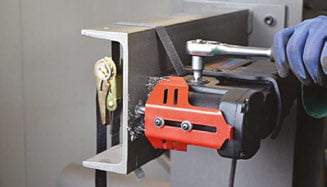
Você fará furos em superfícies verticais ou mesmo acima da cabeça? Quase todas as furadeiras magnéticas são fornecidas com uma corrente ou cinta de segurança para prender a furadeira quando ela estiver sendo usada em uma superfície vertical ou em uma aplicação aérea, mas você também deve se certificar de que o ímã tem o tamanho adequado para este tipo de trabalho. Independentemente do poder de retenção magnético da furadeira, correntes ou cintas de segurança devem sempre ser usadas em aplicações verticais e aéreas para proteger contra a queda da furadeira como resultado de uma falha de energia ou falha da base eletromagnética da furadeira.
Quais acessórios eu preciso? Você pode determinar quais acessórios você pode precisar considerando as seguintes perguntas e certificando-se de que a furadeira magnética que você escolheu pode acomodar os acessórios necessários.
- Preciso usar brocas helicoidais com a furadeira magnética? A furadeira magnética que estou considerando pode acomodar um mandril de perfuração padrão?
- Vou precisar fazer algum furo? A furadeira magnética pode acomodar uma cabeça de rosqueamento ou ela tem um furo integrado? tocando capacidades?
- Vou rebaixar algum orifício?
- Será que algum dia eu precisarei fazer furos em canos ou tubulações? Existe um acessório de tubo disponível para a furadeira?
- Terei de perfurar alumínio ou outros materiais não ferrosos? Existe um acessório de vácuo disponível para a furadeira?
O Mag Drill é fácil de usar? A facilidade de uso, particularmente a facilidade de acesso aos controles magnéticos e do motor, é frequentemente negligenciada na compra de uma furadeira magnética. Os controles podem ser fáceis de acessar quando a máquina é operada em uma direção, mas quando virada, eles podem ser impossíveis de alcançar. Tente encontrar uma máquina que tenha controles que possam ser alcançados independentemente da orientação da máquina.
Quais recursos de segurança são importantes / necessários? Embora usar uma broca magnética para orifícios de diâmetro maior seja muito mais seguro do que usar uma broca manual convencional, as brocas magnéticas ainda podem ser perigosas se não forem usadas corretamente.
- Sempre leia e siga o manual do operador e use a corrente ou correia de segurança fornecida com as máquinas. O eletroímã só funcionará se a energia estiver ligada.
- Certifique-se de que a proteção contra cavacos fornecida com a máquina esteja no lugar durante a perfuração. Isso irá conter as limalhas criadas durante a perfuração e reduzir o risco de uma parte do corpo entrar em contato com o cortador. Se a broca que você está considerando não tiver uma proteção de aparas integrada, vá para outra broca!
- Uma boa furadeira magnética também deve incorporar vários recursos de segurança relacionados ao poder de retenção magnética. Todas as brocas magnéticas Steelmax incorporam dois recursos de segurança de força de retenção magnética que protegem a broca e o operador. Estes são os módulos Magnetic Field Shape Control (MFSC) e Magnetic Power Adhesion Control (MPAC).
- O MFSC otimiza o poder de retenção magnética da broca, especialmente para perfurar materiais mais finos.
- MPAC detecta a força de retenção da base eletromagnética e evita a ativação do motor de perfuração quando há força de retenção insuficiente.
Quase qualquer aplicação de furação pode ficar satisfeito com a furadeira magnética certa. A Steelmax tem uma linha completa de furadeiras magnéticas com diagnósticos visuais de 360 graus e nossos especialistas ficarão felizes em ajudar você a trabalhar nas opções e fazer a escolha certa.
Boa caça e diga-nos como podemos ajudar. Clique aqui Para mais informações ou o email nossa equipe de vendas.

